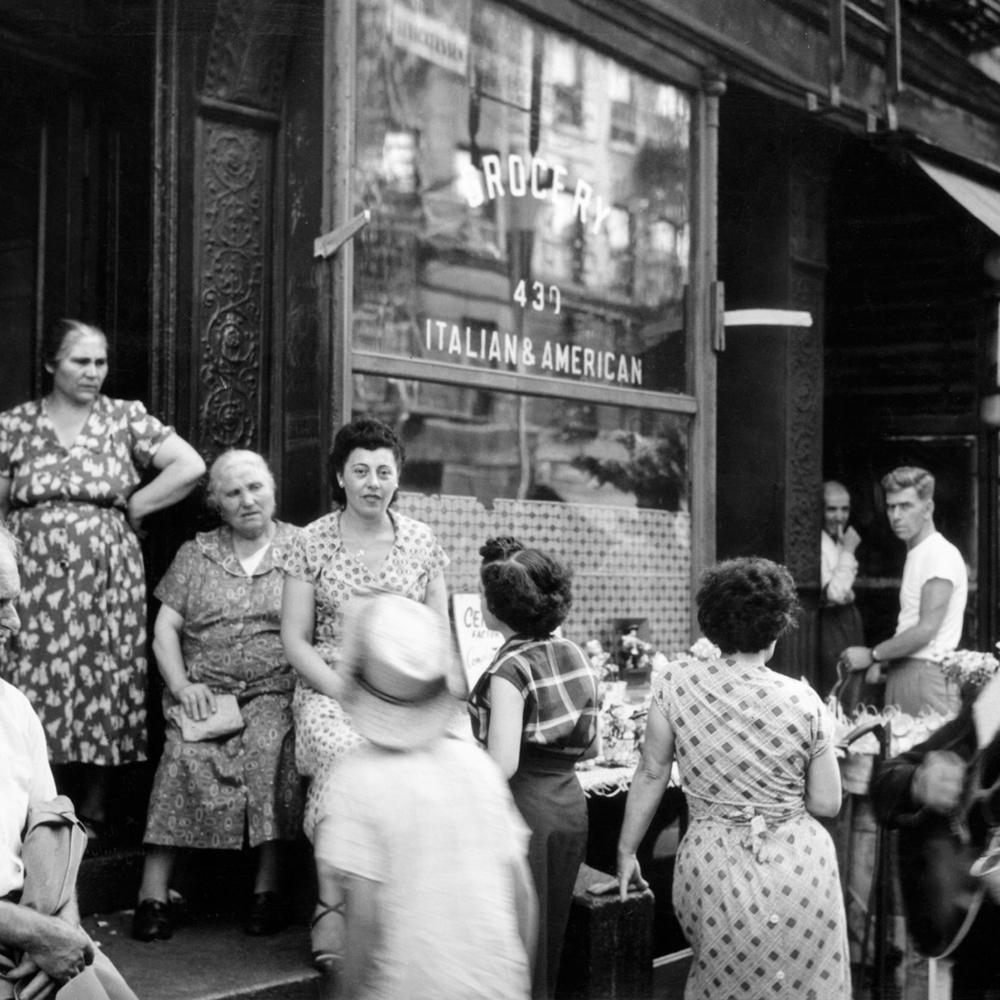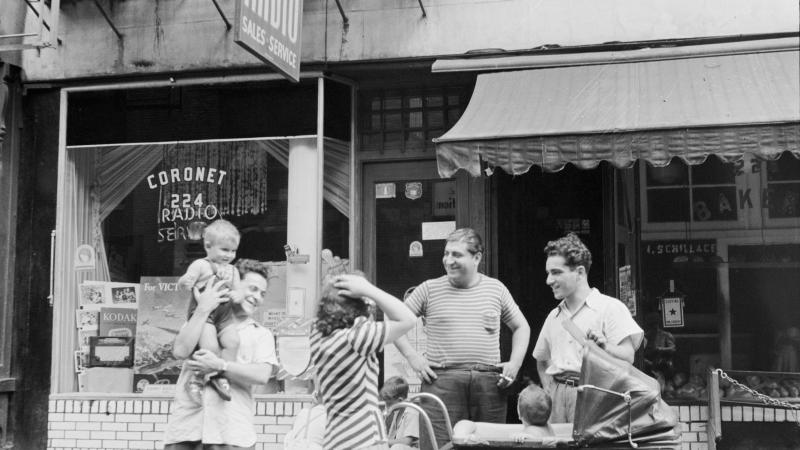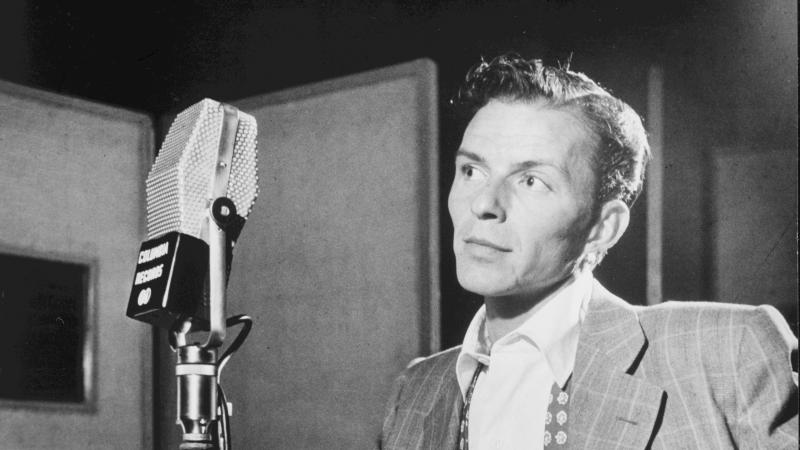"And so you know the difficulty in becoming an American. It isn’t a sudden process. You get over it. But you don’t ever quite get over it. You carry it with you. That’s the great—and not so great—aspect of being or trying to be an assimilated American.” So says writer Gay Talese about his experience growing up Italian American in 1940s South Jersey. It is an introspective and angst-filled admission, somewhat unusual for Italian Americans, who tend to vacillate between voluble romanticism and hardheaded pragmatism. Yet his words are an important reminder that the process of assimilation is often, to borrow a phrase from Norman Podhoretz, a “brutal bargain.”
Talese’s interview comes from a new documentary entitled The Italian Americans, scheduled to air on PBS beginning in February. It is a stylish, engaging, and thoughtful documentary of nearly 150 years of history, chronicling the migration of a largely southern Italian population to America, beginning in the late 1800s and following its winding path toward the American mainstream. The documentary touches on the greatest hits of Italian-American life, from Fiorello La Guardia to Mario Cuomo, from Rudolph Valentino to Frank Sinatra, from Sacco and Vanzetti to Joe Valachi, and from Bank of America founder A. P. Giannini to Chef Boyardee.
We live in an era that is increasingly nervous about assimilation, finding it too coercive an idea to impose on new immigrants. A multicultural America seeks better analogies than the old “melting pot” and instead speaks of “salad bowls” and “gorgeous mosaics.” But The Italian Americans doesn’t shy away from the idea of assimilation, presenting episode titles like “Becoming Americans,” “Loyal Americans,” and “The American Dream.”
Yet this is no simple-minded tale or romanticized story of plucky immigrant success. It plumbs the complexities of immigrant assimilation and American ethnic identity in relatively sophisticated ways. In addition to the discussion of famous Italian Americans and the thoughts of academic talking heads, the documentary tries to include the perspectives of average Italian Americans. For this is their history, as much as it is the history of the wealthy and the successful.
Assimilation has never meant a “melting pot” where everyone “melted” into a homogenous “American” stew. As political scientist Peter Skerry writes, assimilation “has typically meant that immigrants have adapted and changed in disparate domains, rejecting their immigrant past in some ways (forgetting their parents’ mother tongue and speaking English, or learning to tolerate individuals with sharply different values) and holding on to other aspects of their heritage (ethnic cuisine, specific religious holidays, family traditions from the homeland).” It is a process that spans generations and involves a fair share of ambivalence. The loss of traditions and a psychic sense of displacement mix with the benefits of becoming a middle-class American. There are always two sides to every bargain.
Italian immigrants began arriving in large numbers in the late 1800s as relatively unskilled labor that helped fuel a booming industrial economy. These Italian workers seemed unlikely new Americans. Most of those early arrivals were young men leaving a semifeudal Italian South that held little in the way of opportunity.
Nearly half of Italian immigrants would eventually return to Italy, but today’s Italian-American community is descended from those who decided to remain in America. They brought over their families and created ethnic enclaves in Northern cities and small industrial towns of Pennsylvania and Ohio.
Each immigrant group possesses its own strategies for survival and success. For Italians, theirs rested upon two pillars: work and family. Italian immigrants helped provide the labor for American factories and mines and helped build roads, dams, tunnels, and other infrastructure. Their work provided them a small economic foothold in American society and allowed them to provide for their families, which stood at the core of Italian-American life.
Another paradox is that although Italian Americans tend to respect authority, especially the authority of parents and elders, they also harbor a suspicion of broader authority figures, such as politicians and the Catholic hierarchy. This stems from the distrust of such authority in Italy. In America, the family stood as a bulwark against the larger, sometimes hostile, institutions. Respect for authority within the family; suspicion of authority outside of the community.
The downside was that Italians often chose to wait to become naturalized citizens, delaying their full inclusion in America’s political and civic life. one finds many Italians becoming naturalized in the years 1939 to 1941 as war erupted in Europe. The Second World War would find the United States in conflict with Italy, as non-naturalized Italian immigrants would find themselves briefly branded “enemy aliens.”
Yet the war would prove to be the third key foundation of Italian-American assimilation. The stereotypical Hollywood wartime platoon usually included the Italian American from Brooklyn. Over half a million Italian Americans served in the American military during World War Two. Soldiers like Congressional Medal of Honor winner John Basilone, one of thirteen Italian Americans to win the award, became national heroes. Italian Americans now achieved a place in the postwar world, sound track provided by Frank Sinatra.
Even in the 1950s and 1960s, however, Italians encountered prejudice and negative stereotypes. Much of that was related to the Mafia. Often victimized by organized crime, Italian Americans also found their collective reputation tarnished by organized crime, even as they climbed the socioeconomic ladder.
Then there is The Godfather paradox. Written by Mario Puzo, directed by Francis Ford Coppola and starring Al Pacino and Robert De Niro, the first two Godfather films stand as two of the greatest American films of all time. The movies introduced famous lines into the American lexicon: “I’m gonna make him an offer he can’t refuse,” “Luca Brasi sleeps with the fishes,” as well as the ominous message behind a horse’s head in a bed.
The paradox is that one of the great triumphs of modern Italian-American culture has also reinforced many of the negative stereotypes that have long dogged Italian Americans. The book and the movie also provided a more unfortunate justification for organized crime: The business of Don Corleone and his family seemed to differ very little from the business of American capitalists. This dark lesson may have fit with the decade’s sense of corruption and disillusionment, but it also seemed to legitimize organized crime.
It has also spawned a whole genre of mob-related imitators, including Martin Scorsese’s Goodfellas and The Sopranos, one of the best television shows of all time. There seems to be no end to mob-themed entertainment, yet there is no denying the greatness of some of the work or its popularity among Italian Americans, as well as the broader public. Mafia-related shows and movies, plus reality entertainment shows like Jersey Shore and The Real Housewives of New Jersey, present a skewed version of Italian-American life.
The Italian Americans condemns those cultural stereotypes that still permeate media depictions of Italian Americans before returning to Roseto, Pennsylvania, a small working-class town with a large Italian-American population. In the early 1960s, a medical survey found its residents had a lower-than-average incidence of heart disease. Researchers argued that the explanation lay in the social cohesion of a community centered on large Italian families, the local Catholic church, and ethnic associations.
When researchers returned to Roseto years later, however, they found that heart disease rates were no longer exceptionally low, but rather in keeping with other nearby towns. What happened? As the older generation aged, their local institutions weakened. The young generation grew up and moved out of their tight-knit ethnic enclaves, experiencing the benefits of upward mobility.
The Roseto story itself contains a bit of romanticizing. Anyone familiar with large Italian families knows that they can be a source of comfort and stability, but also a source of tension and stress. Nevertheless, the story of Roseto plays into a deep-seated nostalgia for the “old neighborhood.” The conflict between romanticism and pragmatism again raises its head; Italians long for the simpler past and old neighborhoods, but they have also been quick to leave those neighborhoods for greener pastures—and larger houses.
The documentary is ambivalent about these changes. It segues from Roseto to Bensonhurst, Brooklyn, the site of a murder of a young black man by a mob of mostly Italian Americans in the late 1980s. The idea is that the isolation and insularity of the “old neighborhood” is also problematic. Assimilation means not just giving up the language of one’s ancestors, but also learning to live in a pluralistic society.
Finally, we are left with a third-generation Italian American who goes to Sicily in search of his family roots. In recent decades, geneaology has exploded among Americans. In the past, genealogy was mostly the preserve of old-stock Americans seeking to trace their family trees back to the Puritans and Pilgrims. Today, with the popularity of websites like Ancestry.com and easy access to immigrant ship manifests at the Ellis Island website, genealogy has exploded among Americans of a more recent vintage.
Some Italian Americans are researching their ancestors and turning to Italy to regain a kind of authenticity of experience they feel has been lost in the assimilation process. one reason why many of our ancestors did not spend time dwelling on the past was that they understood there was little future for them in Italy. The process of immigration thrust an insular people deeply rooted in family and place into the modern world. once in America, that conflict between deeply rooted traditions and the possibilities of a new life grew. Their descendants have been dealing with that tension for generations.
As Italian Americans rediscover Italy and their immigrant ancestors, new immigrants from across the globe are continually arriving in America. They are making their own lives and navigating the complicated process of adapting to a new world while not completely surrendering the past.
Contrary to conventional wisdom, history doesn’t repeat itself. These new immigrants face their own unique challenges, different from those of Italian immigrants. It would be a mistake to say The Italian Americans represents a roadmap for assimilation. Instead, it is a useful reminder of the duality of immigrant life, of the strivings and contortions of those who live in the present while simultaneously facing both the past and the future.


